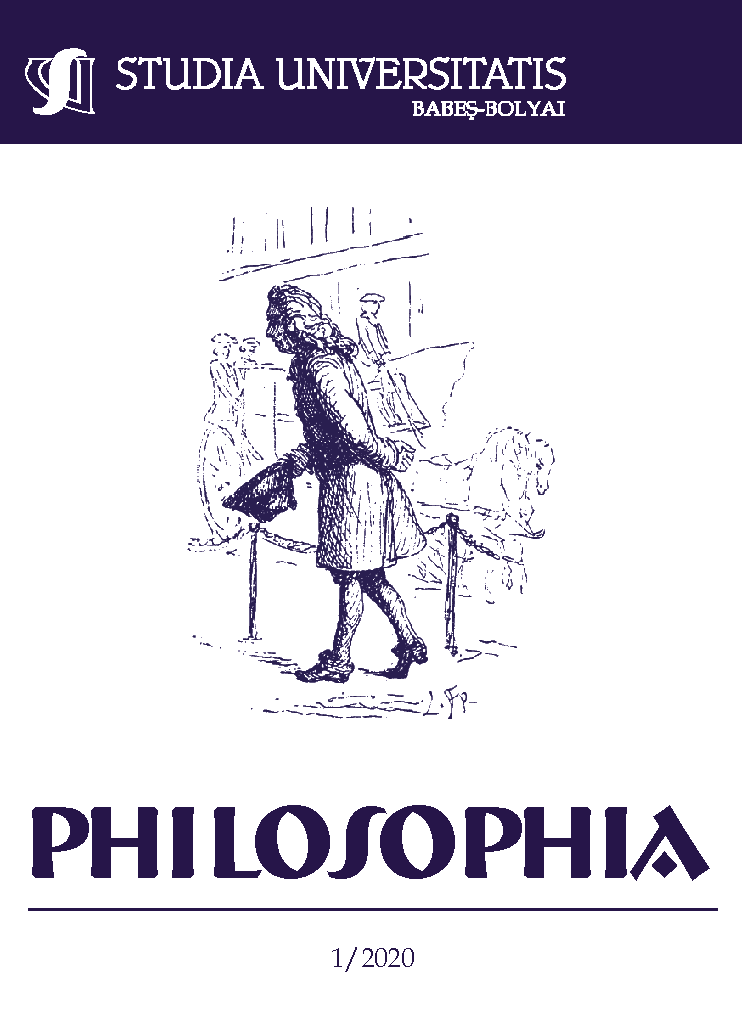DARIO ARGENTO ET LA MÈRE-SORCIÈRE : PSYCHANALYSE D’UNE IMAGE OBSÉDANTE
DOI:
https://doi.org/10.24193/subbphil.2020.1.02Keywords:
Dario Argento, psychoanalysis, biography, witchcraft, mother-witch, fairy-tales, literatureAbstract
Dario Argento and the Mother-Witch: Psychoanalysis of an Obsessive Image. This paper tries to present the complexity of the maternal figures in the work and biography of film director Dario Argento. The methods of interpretation are inspired by psychoanalysis, because Argento often referred to Freud’s writings in his films or in his recent autobiography, Fear, published in 2014. The criminal mothers depicted in some films signed by Dario Argento show, through violent narratives, the difficulties he had in dealing with the maternal imago. But the most striking embodiments of the maternal monstrosity are to be found in the figure of the mother-witch, in the trilogy composed by Suspiria (1977), Inferno (1980), La Terza Madre (2007). The mother-witch has, of course, biographical sources, but its presence in some classical fairy-tales or in fin-de-siècle decadent literature also inspired the film director.
References
Argento Dario, Peur. Autobiographie, Traduit de l’italien par Bianca Concolino Mancini et Paul Abram, Aix-en-Provence, Rouge Profond, 2018.
Balmain Colette, « The psychoanalytic trap in Dario Argento’s L’uccello dalle piume di cristallo/The Bird with the Crystal Plumage (1970) », in Horror Studies, vol. 3, issue 2, 2012, pp. 223-242.
Baudelaire Charles, Œuvres complètes, Edition établie par Claude Pichois, Paris, Gallimard, « Bibliothèque de la Pléiade », 1993, tome I.
Bettelheim Bruno, Psychanalyse des contes de fées, trad. Par Théo Carlier, Paris, Robert Laffont, 1976.
Cooper L. Andrew, Dario Argento, University of Illinois Press, 2012.
Creed Barbara, The Monstrous-Feminine. Film, Feminism, Psychoanalysis, New York, Routledge, 1993.
De Quincey Thomas, Confessions of an English Opium-Eater and Related Writings, Edited by Joel Faflak, Broadview Editions, 2009.
Faleschini Lerner Giovanna, D’Amelio Maria Elena, (éd.), Italian Motherhood on Screen, Palgrave Macmillan, 2017.
Freud Sigmund, Un souvenir d’enfance de Léonard de Vinci, Traduit de l’allemand par Marie Bonaparte, Paris, Gallimard, 1977.
Heller-Nicholas Alexandra, Martin Craig, « The House of the Screaming Child: Ambivalence and the Representation of Children in Profondo Rosso (Dario Argento, 1975) », in Red Feather Journal, Fall 2013, pp. 41-56 (https://researchbank.swinburne.edu.au/file/04964642-889f-4d7a-8b8e-e6913b7903ea/1/PDF%20%28Published%20version%29.pdf).
Koven Mikel J., La Dolce Morte: Vernacular cinema and the Italian Giallo Film, Scarecrow Press, 2006.
Magherini Graziella, La Sindrome di Stendhal, Firenze, Ponte Alle Grazie, 1989.
Mauron Charles, Des métaphores obsédantes au mythe personnel. Introduction à la psychocritique, Paris, José Corti, 1963.
McDonagh Maitland, Broken Mirrors/ Broken Minds: the Dark Dreams of Dario Argento, University of Minnesota Press, 2010.
Mendik X., « From the monstrous mother to the “Third Sex”: Female abjection in the films of Dario Argento », in A. Black (éd.), Necronomicon: Book Two, London, Creation Books, 1998, pp. 110-133.
Pócs Éva, « Why Witches are Women », in Acta Etnographica Hungarica, 3-4 / 2003, pp. 367-383.
Pop-Curșeu Ioan, Magie și vrăjitorie în cultura română. Istorie, literatură, mentalități, Iași, Polirom-Cartea românească, 2013.
Pop-Curșeu Ioan, « Encore quelques mots sur la présence de Baudelaire au cinéma (et dans les médias audiovisuels)/ Încă câteva cuvinte despre prezenţa lui Baudelaire în cinema (şi în mediile audiovizuale) », in Baudelaire – 150 ans / Baudelaire – 150 de ani (Ioan Pop-Curșeu, éd.), Bucarest, Editura Muzeului Naţional al Literaturii Române, 2018, pp. 124-166.
Pop-Curșeu Ioan, « Hansel et Gretel, personnages de films : famille, sorcellerie, cannibalisme et désir(s) », in Cinematographic Art & Documentation, no. 23/ 2019, pp. 50-78.
Reich Jacqueline, « The Mother of All Horror: Witches, Gender, and the Films of Dario Argento », in Keala Jewell (éd.), Monsters in the Italian Literary Imagination, Detroit, Wayne State University Press, 2001, pp. 89-105.
Schulte-Sasse Linda, « The “mother” of all horror movies: Dario Argento’s Suspiria », https://www.kinoeye.org/02/11/schultesasse11.php.
Thoret Jean-Baptiste, Dario Argento, magicien de la peur, Paris, Cahiers du cinéma, 2002.
Downloads
Published
How to Cite
Issue
Section
License
Copyright (c) 2020 Studia Universitatis Babeș-Bolyai Philosophia

This work is licensed under a Creative Commons Attribution-NonCommercial-NoDerivatives 4.0 International License.





